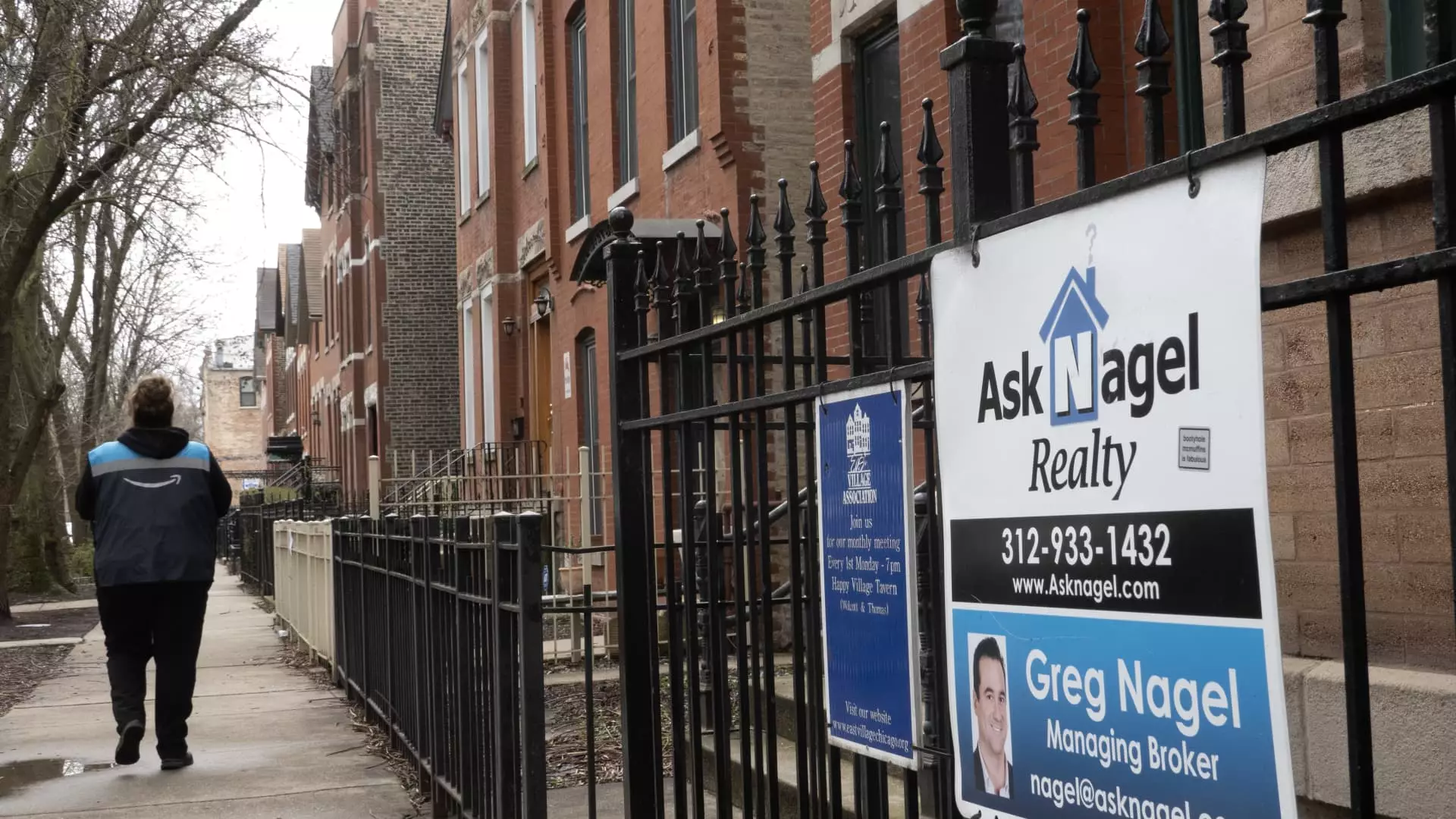The real estate market experienced a significant drop in June, with sales of previously owned homes plummeting by 5.4% compared to the previous month. The National Association of Realtors reported a total of 3.89 million units sold on a seasonally adjusted, annualized basis, marking a 5.4% decrease from the previous year. This slowdown in sales was attributed to rising mortgage rates, with the average rate on the 30-year fixed mortgage surpassing 7% in April and May. The subsequent pullback in rates to the high 6% range was not enough to stimulate demand, leading to the lowest sales pace since December.
Lawrence Yun, chief economist for the Realtors, noted a gradual transition from a seller’s market to a buyer’s market. Homes are lingering on the market for a longer duration, resulting in fewer offers for sellers. Buyers are becoming more discerning, insisting on home inspections and appraisals before committing to a purchase. Additionally, national inventory levels have been on the rise, increasing by 23.4% from the previous year to reach 1.32 million units at the end of June. Despite this surge in inventory, supply remains limited, with only a 4.1-month supply available. A balanced market typically requires a six-month supply, indicating that the current market heavily favors sellers.
The median price of existing homes continued to climb, reaching $426,900 in June, representing a 4.1% year-over-year increase and setting a new record high for the second consecutive month. The disparity in price growth was evident across different price segments, with sales of homes priced above $1 million experiencing gains, while lower-priced homes faced a decline in sales. The scarcity of affordable housing options exacerbated the situation, leading to a surge in listings priced between $200k to $350k. Despite the increase in inventory, prices remained elevated, reflecting the strong demand in the market.
Buyer Behavior
Higher-end buyers, who often rely on cash transactions, accounted for 28% of total sales, up from 26% in the previous year. On the other hand, investor activity slightly declined, constituting 16% of sales compared to 18% previously. The influx of lower-priced listings dampened the median listing price, as smaller and more affordable homes entered the market in larger numbers. The interplay between supply, demand, and pricing dynamics will ultimately shape the future trajectory of the real estate market.
Future Outlook
Looking ahead, Lawrence Yun emphasized the critical role of inventory in determining market outcomes. As inventory levels continue to rise, the market may witness either a rebound in home sales or a stabilization in prices. The next few months will be crucial in gauging the resilience of the real estate sector and understanding the impact of ongoing economic trends on housing market dynamics. Investors, sellers, and buyers alike will need to adapt to the evolving landscape and navigate the challenges and opportunities that lie ahead.

Leave a Reply